
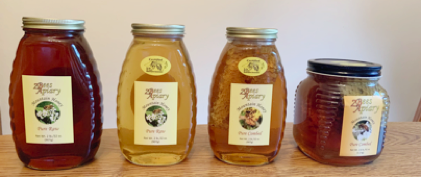
ZBees liquid gold... fresh from the colonies!

Lifetime member of the North Carolina Beekeepers Association
Pollination Around the Apiary
Every honeybee apiary has flying visitors who stop by on a regular basis for something. Some visitors are just conducting their natural task of pollination and they are most welcome. Others are flittering about and looking for opportunities to steal precious nectar from the surrounding foliage, or honey from the colonies. Regardless of their reasons, beekeepers must keep watch for actions of robbing or drifting. Honeybees are so important to the ecosystem that the US Department of Agriculture (USDA) states that honeybees and other flying insects are "very important for the pollination of over one hundred crops in the United States." In addition, honeybees and other flying insects account for approximately eighty percent (80%) of all pollination activities. Without these pollinators there would be approximately thirty-three percent less food in the grocery store or produce stands.
Whenever you meet a beekeeper OR a farmer... THANK THEM for helping to keep food on your table!
The Dragon and Butter Fly
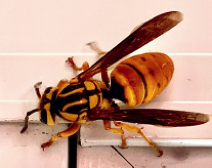
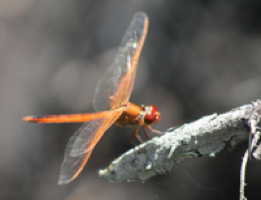
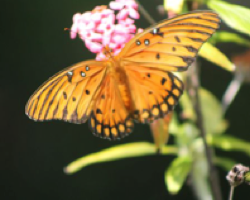
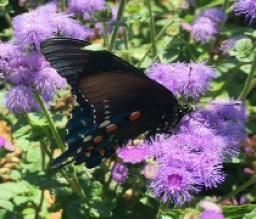
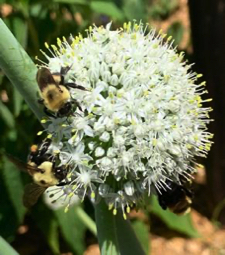
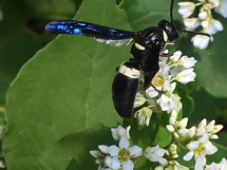
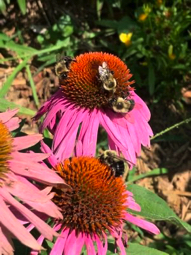
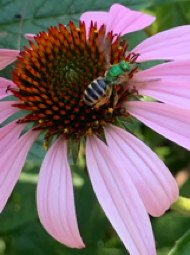
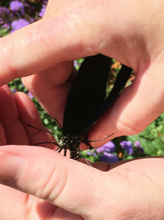
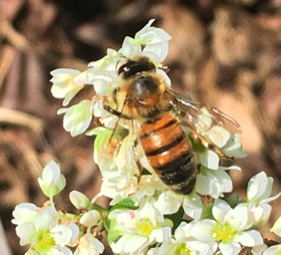
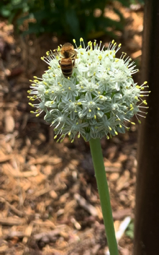
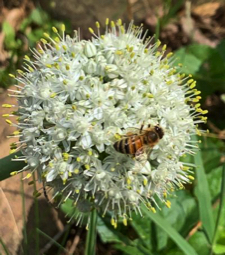
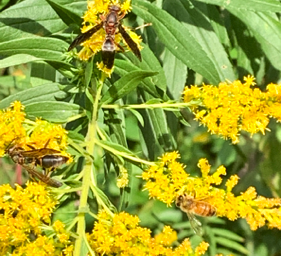
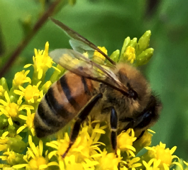
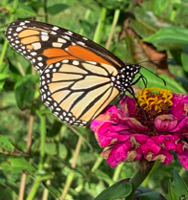
Eastern Carpenter Bees on Onion Flower
Italian Honeybee on Onion Flower
The next time you are outside and enjoying nature take a moment to stop and look around to see if you can find any pollinators conducting the important tasks of pollination. Without these flying insects our food supplies would be about thirty-three percent (33%) less. Pollination is the primary purpose of the western honeybee (Apis mellifera).
Italian Honeybee on Buckwheat
Bumble Bees on Purple Cone Flowers
Sweat Bee on Purple Cone Flower
Black-tooth Wasp on Buckwheat
Italian Honeybee on Blazing Star
Southern Yellow Jacket - Queen
Italian Honeybee and Wasps on Goldenrod
Dragonfly - Orange Flame Skinner
Monarch Butterfly on Zinna
Fritillary Butterfly on Milkweed
Male Pinevine Swallowtail
Never… bee- surprised who shows up around your apiary. The honeybee does like to draw nectar or pollen from the Purple Coneflower- Echinacea purpurea, However, it is the bumblebee who seems to enjoy this flower’s nectar the most. Even butterflies will visit these cone flowers more often than honeybees. My research during the past three honeybee seasons has revealed that they will target the most delicious nectar in season typically tree pollens and nectars. Thus, when more highly desired tree nectars are available Buzz the the Apiary honeybees will work those foliage’s first, every time. Only when there is no predominant tree nectar or pollen available will my honeybees move to the nearby flowers or the grasses in search of a tasty meal.
Conversely, I find that bumblebees prefer to forage down low and will often be found on the various flowers around the apiary. Might I suggest that you take an hour of your time and watch your apiary. Note where your honeybees are heading when they leave the hive. Observe each variety of tree, shrub, and flower within 100 yards of the hives and look for evidence of honeybee activity. You may be surprised at what you see! This will also help you understand which foliage is most desirable to the bees. You may have to plant more flowers with varying bloom times to help the bees during a dearth period.